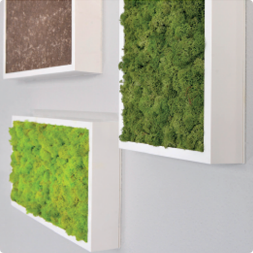Dracaena Elegance Cane
$159.00
Well, the name says it…Elegance. And if you’re looking for an elegant plant in a tight corner with limited light, let us box one of these beauties up for you. Our Dracaena Elegance Cane comes in a 10″ grow pot that will stand about 4.5 – 5.5′ (grow pot + plant). The Gold Dust Phoenix Square planter and FiberEx moss are sold separately.
Plant Details
| Size | 4-5', 5-6+' |
| Difficulty | Easy Care Level |
| Light | Low Light, Medium Light, Bright Indirect Light |
| Pet Friendly | This plant may be toxic to pets |
Our 30-Day Guarantee
Description
Like her cousins Janet Craig and the Lisa Cane, the Dracaena Elegance Cane is a native of Africa and is another versatile member of the Dracaena genus (Dracaena deremensis, to be specific). In fact, her genes are almost identical to the Lisa Cane, but the Elegance Cane is grown in traditional soil, where the Lisa is a product of Hawaii and grown in lava rock. Both can thrive inside with very little care and can be sustained in the lowest of indoor light. As a member of the fuss-free family of Dracaena plants and has enjoys the exact same maintenance regime of its siblings – like Janet Craig Limelight and the Janet Craig Carmen. It will survive in low light, but thrives in moderate- and high-light spaces. If you can get it in good light, you can get it and (nearly) forget it.
Watering
Like other members of the Dracaena family, it prefers its root zone on the dry side; so make sure the soil dries out between waterings. See our watering guide for more information.
Light
It’s a Dracaena, with large green leaves for capturing the slightest bit of light, and likely our most low-light plant offering. It will, however, do better and last longer with at least moderate light. Like other shade-grown foliage plants, do not expose this plant to direct sunlight or it will burn the leaves very quickly.
Nutrition
The Elegance Cane will not need to be fed during the first 6 months after it has shipped. During this time, it will use the residual nutrients from nursery production. After 6 months, it can be fed quarterly with a complete fertilizer formulated for interior plants. Please refer to our nutrient guide for details.
Cleaning
This plant, with its long, strap-like leaves, is easy to clean – that that’s a good thing since those large leaves tend to attract some dust. Simply wiping the leaves with a wet cloth usually does the trick. For spots where something else (besides dust) has landed on your plant, use a mild soapy solution to wet the cloth; then wipe. This will restore the luster to your plant.
Pruning
Don’t. Unless your plant is not meeting the dimensions of its intended space, you will not need to prune this plant. Older leaves, though, may yellow, and they can be pruned or snapped off. Brown tips can be trimmed off to the contour of the leaf. See our pruning guide for details.
Bugs
The biggest threat for this plant is Mealybugs and they can be pesky – so, keep it clean. Look for the little white cottony bugs at the base of the leaves. If you see them, break out the spray bottle with a light soap solution and spray them daily ’til they’re gone.
Trouble
Aside from the mealybug threat, minor leaf spots and old age will be your biggest worry with the Janet Craig.
- Leaf spots – Spots on the leaves may be a natural imperfection from production. If you get a few leaf spots, don’t sweat it – it’s Mother Nature’s way of letting you know it’s a real, live plant. Over time, leaf spots, especially on the margins, can develop from a build-up of fluoride in the leaves from water sources treated with fluoride – like almost everywhere that water comes from a treatment plant. If you can water with rain water from your garden, have at it; otherwise, be on the lookout for discolored margins over a very long period of time. When older leaves become unsightly, just remove them.
- Yellow and brown leaves – Old leaves may turn yellow and begin to brown. These should be removed.


















